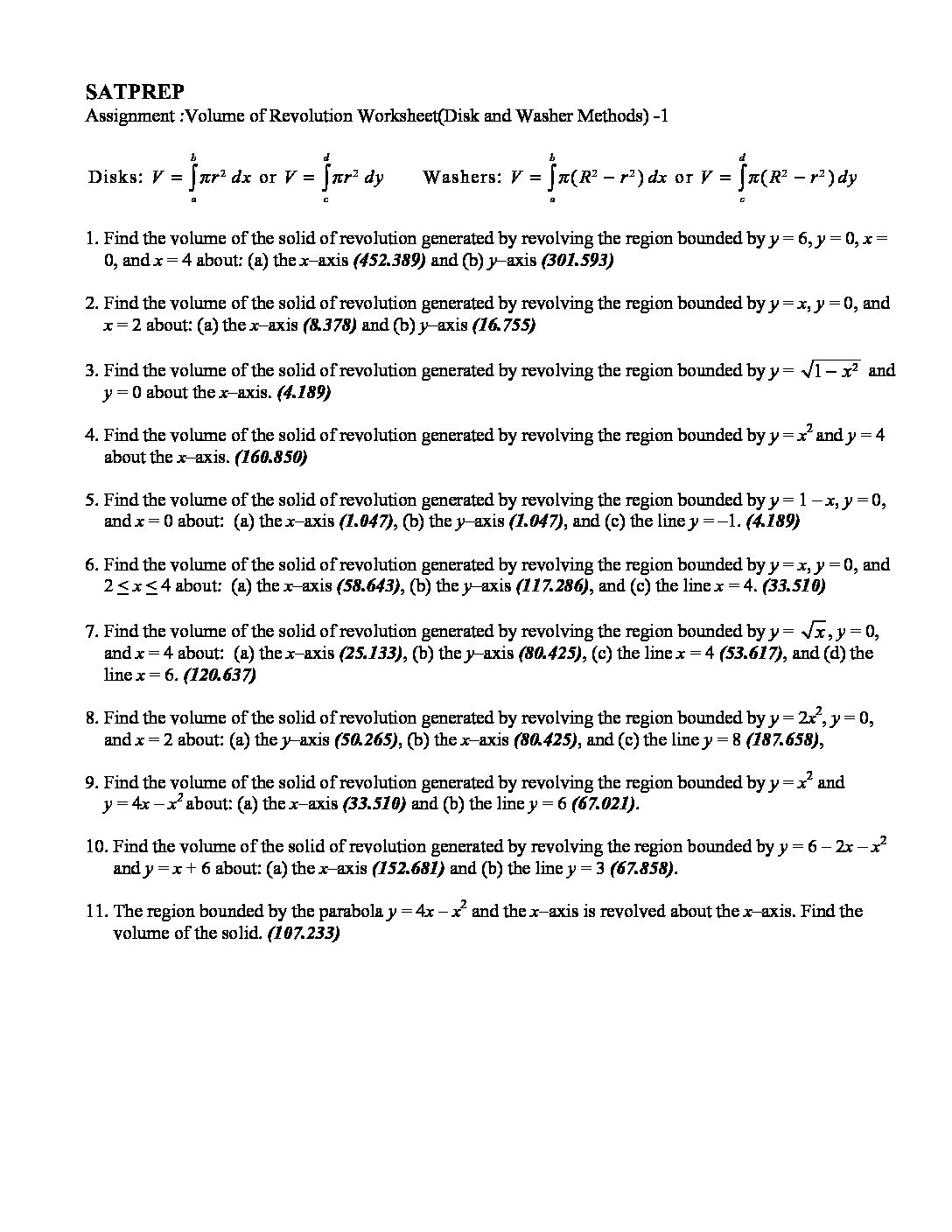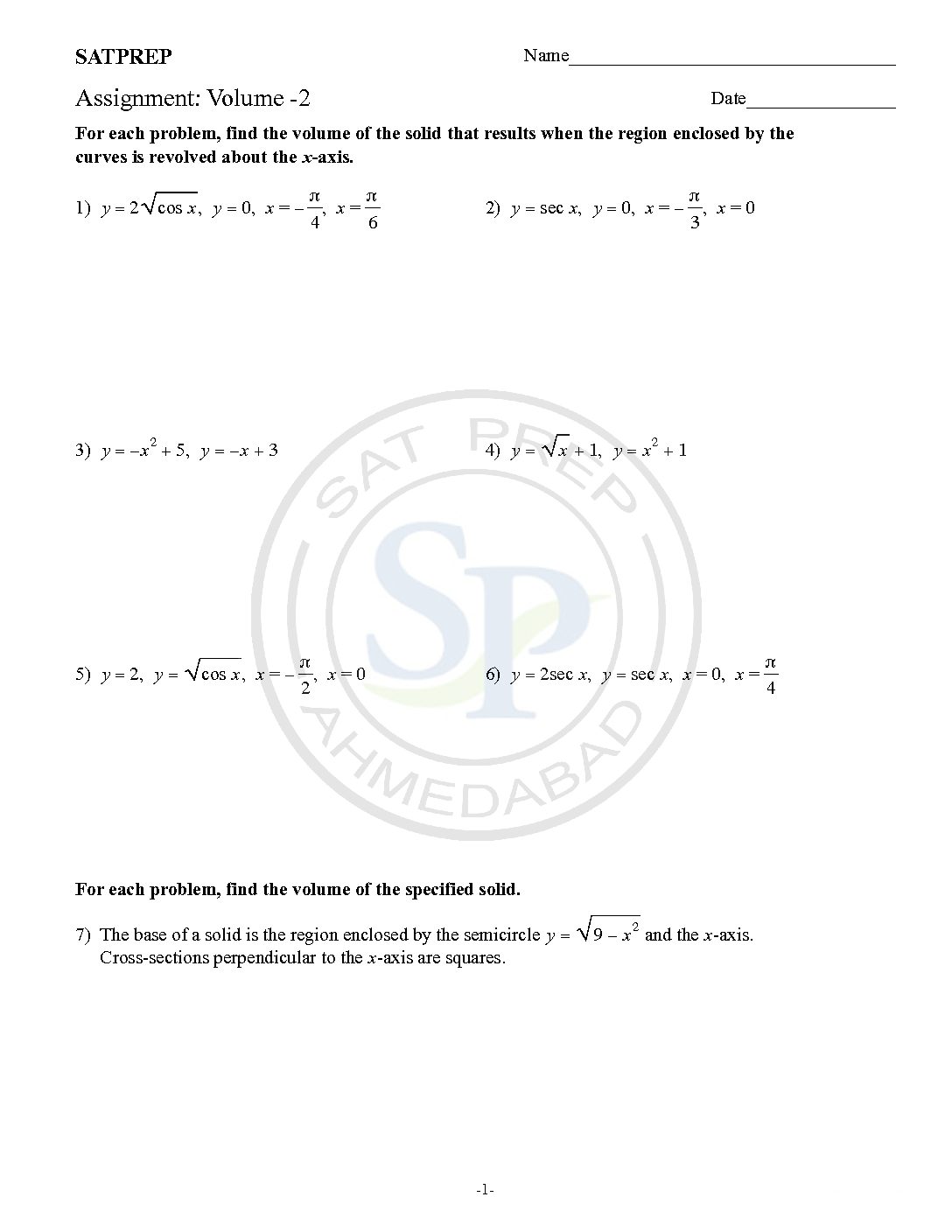Sum or difference of angle is called compound angle. Similarly algebraic sum of two or more angles also called compound angle . Hence it solve . Sum and Difference identity
You are browsing archives for
Category: Definite Integration
Definite integration
A Definite Integral has start and end values. In other words there is an interval [a, b]. Hence , definite integral gives particular solution. Definite Integration
Volume of revolution of solid
Volume of revolution. To get a solid of revolution we start out with a function, y=f (x), on an interval [a,b]. We then rotate this curve about a given axis to get the surface of the solid of revolution. For purposes of this discussion let’s rotate the curve about the x -axis, although it could be any vertical […]
Volume of revolution of solid
Volume with Rings. To get a solid of revolution we start out with a function, y=f (x), on an interval [a,b]. We then rotate this curve about a given axis to get the surface of the solid of revolution. For purposes of this discussion let’s rotate the curve about the x -axis, although it could be any vertical or […]
Volume of revolution
To get a solid of revolution we start out with a function, y=f (x), on an interval [a,b]. We then rotate this curve about a given axis to get the surface of the solid of revolution Volume of Revolution
Applications of Integration(Kinematics)
This post about Application of Integration into Kinematics. Solve for displacement given a velocity function in time. Solve for displacement and velocity given an acceleration function in time, & distinguish between displacement and total distance. kinematics
Volume -2
To get a solids of revolution we start out with a function, y=f (x), on an interval [a,b]. We then rotate this curve about a given axis to get the surface of the solid of revolution. Volume
Area under the curve
To find the area under the curve y = f (x) between x = a and x = b, integrate y = f (x) between the limits of a and b. Areas under the x-axis will come out negative and areas above the x-axis will be positive. Area under the curve
Second fundamental theorem of Calculus-2
Second Fundamental Theorem of Calculus: Then F ( x) is an antiderivative of f ( x )—that is, F ‘( x) = f ( x) for all x in I. That business about the interval I is to make sure we only get limits of integration that are are reasonable for your function. Some things […]
Trigonometric ratio-2
The ratios of the sides of a right triangle are called trigonometric ratios. Sine, Cosine and Tangent are main ratio while rest three reciprocal. Hence Sine and Cosine are the trigonometric ratios, whose values are less that 1 for an acute angle. Because they are periodic. www.kutasoftware.com










